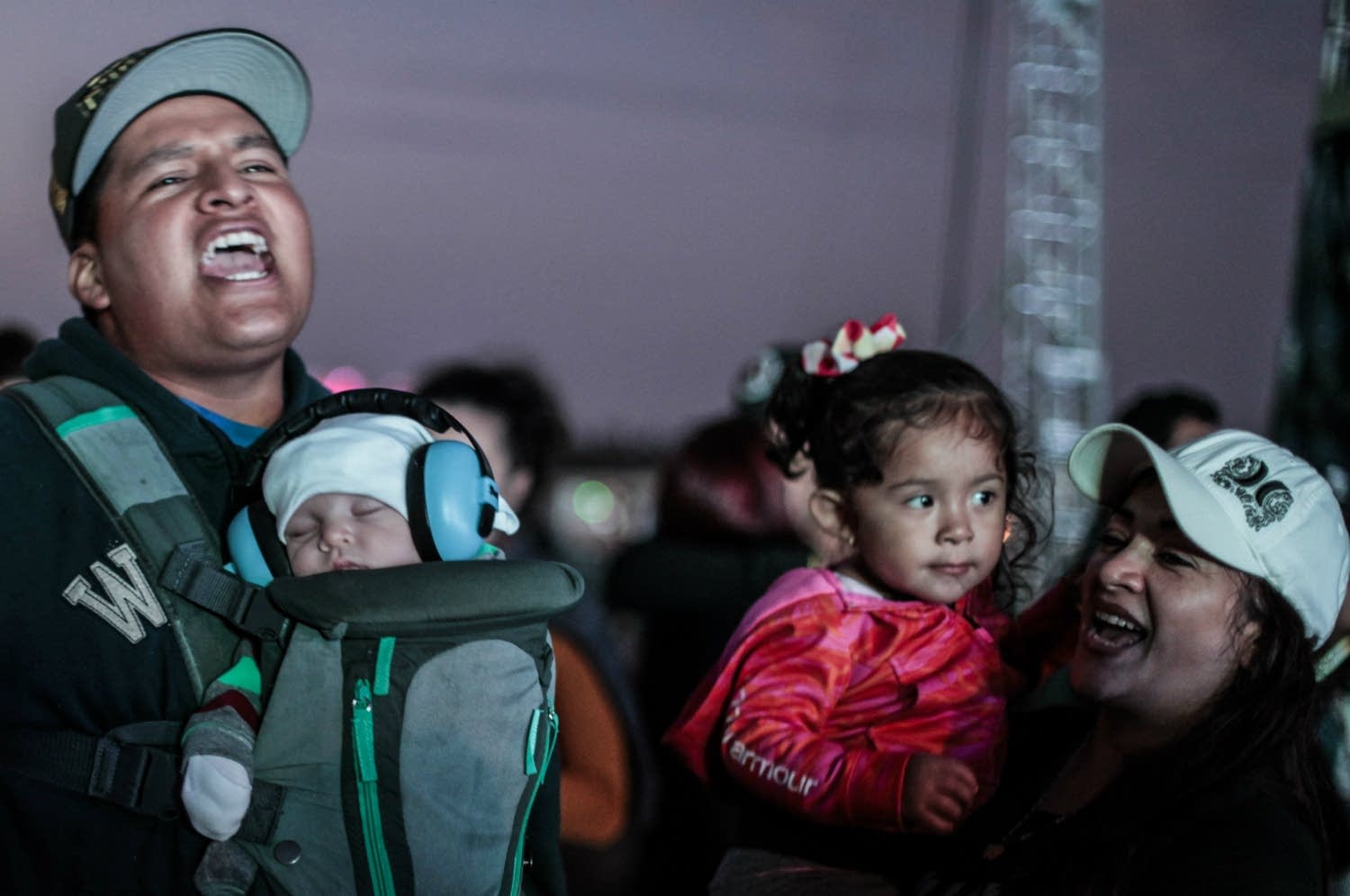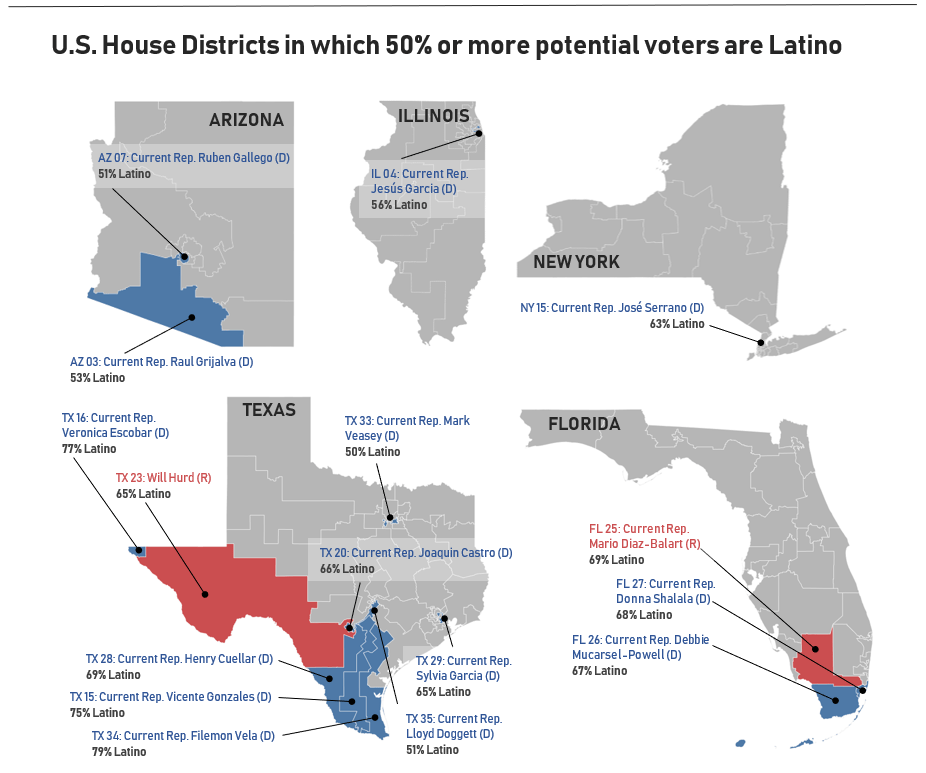Latinos get louder (at the ballot box)
Nearly 10 percent of all voters were Latino in the 2018 midterms, roughly double their share just 20 years ago, in 1998.
Maria Alejandra Cardona for MPR News
by Andi Egbert, Sr. Research Associate
Latinos get louder (at the ballot box)
The growing group wielded more of its voting power in 2018
The collective voice of Latino voters was louder in the 2018 midterm elections than any other nonpresidential voting year in history.
Newly released data show that voter turnout rate among eligible Latinos jumped 13 percentage points between the 2014 and 2018 midterm elections, to 40.4%. This enthusiastic leap in voting yielded an additional 4.9 million Latino voters, or 11.7 million total. This generally bodes well for Democrats, who earned about two-thirds of the Latino vote in 2018, according to exit polls.
While 4 in 10 eligible Latinos voting was historic for a midterm, Latinos still trailed eligible Black voters (5 in 10) and eligible White voters (6 in 10) in willingness to cast a ballot in 2018. All race and age groups saw sizeable turnout gains in the 2018 midterms, indicating that Latinos were part of a larger groundswell of political attention and activism by U.S. voters who are typically much sleepier when it comes to midterm voting.
Source: U.S. Census Bureau, Current Population Survey, Voting and Registration Supplement.
Four features of Latino voting patterns in 2018 stood out:
Immigrants who had to acquire the right to vote were particularly energized or angered, depending on whom you ask. The voting turnout rate of Latinos who were naturalized citizens exceeded 44%, outpacing U.S.-born Latinos (39%). And those who were born in Latin America or Mexico had 46% turnout.
Efforts to make voting easier were especially welcomed by the Latino electorate and likely amplified the number of Latino votes cast: 45% of Latino voters said they voted before Election Day, whether by mail (27%) or in person (18%). This was similar to the 52% of Asians who took advantage of early voting options, but quite a bit higher than the 39% of White voters and 33% of Black voters who did so.
Latinas led the charge: Overall turnout for females outpaced males by 6 percentage points—43% versus 37%—among Latino voters. (Note: these data do not permit non-binary answers). This female gap is even slightly larger among Latino voters younger than 45, but closes after age 65.
Latino voter turnout by age followed well-worn patterns observed in the broader voting public: The youngest voters were least likely to vote, with turnout rising with each successive older cohort (until a slight dip in the 75+ population). Only 28% of eligible 18- to 24-year old Latinos voted compared to 57% of those age 65-74. Note that younger Latinos would yield far more votes if these turnout rates were identical—due to the overall youthfulness of the Latino population: 59% of potential Latino voters are under age 45, compared with 44% of all U.S. citizens of voting age.
Where are Latino voters concentrated?
While Latinos are a growing force in determining ballot outcomes across the nation, their votes are more keenly felt in certain states and congressional districts. Latinos represent about:
43% of eligible voters in New Mexico,
30% of eligible voters in both California and Texas,
23% of eligible voters in Arizona, and
20% of eligible voters in both Florida and Nevada.
In some congressional districts, the Latino share of eligible voters is much higher. There are 28 districts in which Latinos presently represent half or more of the potential voter universe (in addition to Puerto Rico’s at-large district). Only two are represented by a Republican.
Source: U.S. Census Bureau, 2017 American Community Survey.
Graphic by APM Research Lab.
Nearly 10% of all voters were Latino in the 2018 midterms, roughly double their share just 20 years ago, in 1998. Rising turnout rates, compounded with quickly rising absolute numbers of potential Latino voters (29 million in 2018 and growing) cannot be underestimated. While America’s Latinos voters are far from a plurality, the latest midterms were a preview of their increasing role in choosing the next U.S. president, the U.S. House, and many other races in 2020.
-Andi (@DataANDInfo)
Note: Latinos may be of any race.
CHECK OUT OUR “REPRESENTING US” PROJECT TO EXPLORE MORE DEMOGRAPHICS OF CONGRESSIONAL DISTRICTS OR EXAMINE VOTING OUTCOMES IN 2018 AND 2016
Reactions? Please email us your thoughts or join the conversation on Twitter or Facebook.




